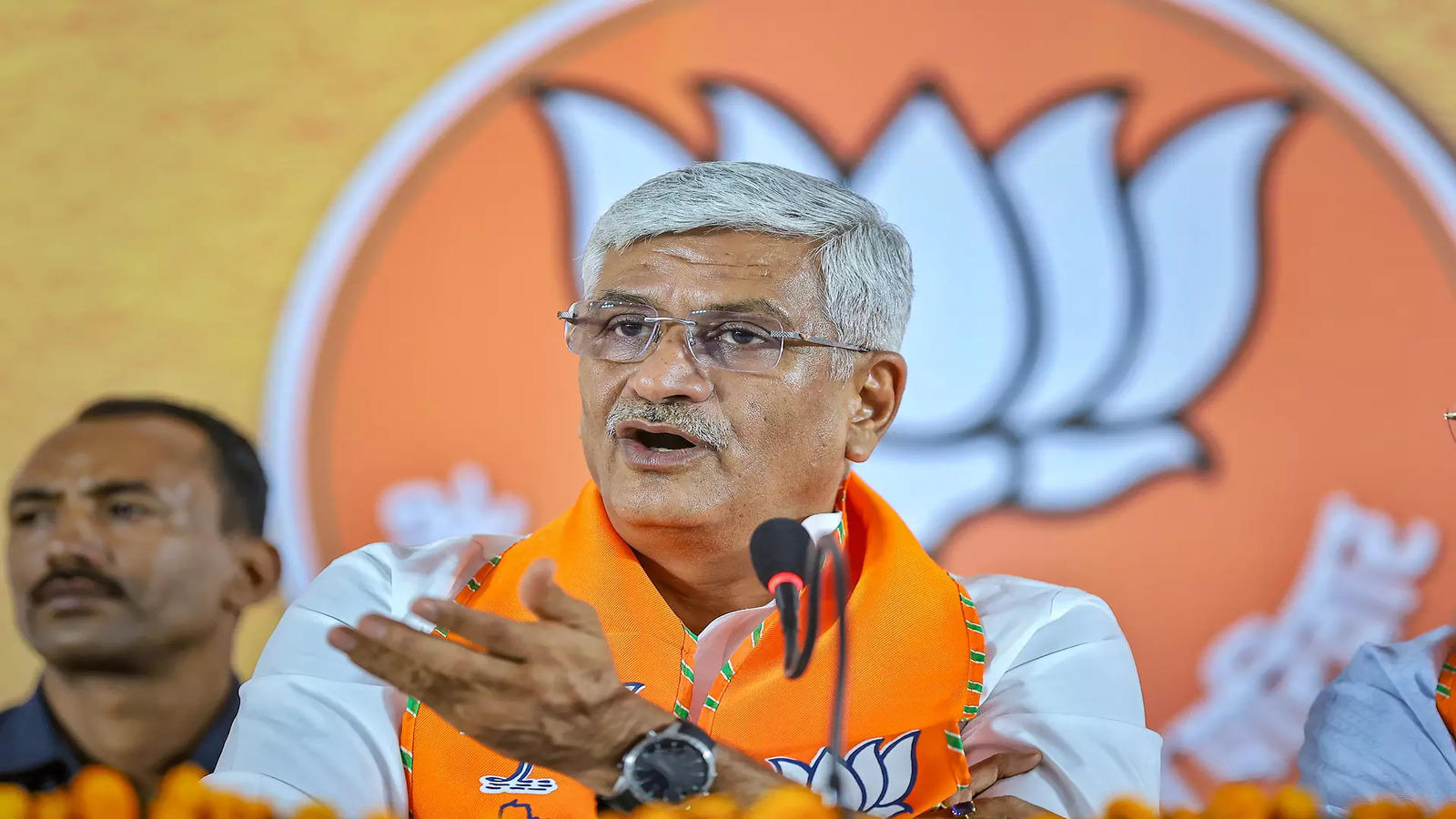‘The Opposition alliance has lost its relevance. Is it visible at all?’
Union Jal Shakti Minister Gajendra Singh Shekhawat appears to be a man in a hurry to achieve his targets. Be it strategising for the BJP to win a handsome majority in Rajasthan Assembly elections or his mission of ensuring that the party wins all 25 Lok Sabha seats in the desert state, the veteran Sangh worker is confident that the Sab ka Saath, Sab ka Vikas model of development given by Prime Minister Narendra Modi will power the BJP to a record victory in parliamentary elections. Excerpts from an interview:
Q: What kind of a victory margin do you see for the NDA in the Lok Sabha elections?
A: We are working towards fulfilling the target set by Prime Minister Narendra Modi for the BJP to win 370 seats on its own, with the NDA alliance crossing the 400-mark. The sustainable and inclusive development model given by the PM will ensure public support for a third term for him. The PM had resolved in 2014 that we are here not to rule but to change and develop the nation. The path for achieving this goal passes through villages and is linked to improvement in quality of life of the rural masses. UN agencies, Oxford University and the Niti Aayog have confirmed that under PM Modi’s governance 25 crore people of the country have emerged from poverty.
Q: Do you see INDI Alliance of the Opposition as a challenger to Prime Minister Narendra Modi-led BJP?
A: Where is the alliance? The Opposition alliance has lost its relevance. Is it visible at all? Everybody is leaving it… Mamata Banerjee and Nitish Kumar have left. In such a scenario, the alliance is almost non-existent.
Q: Is the Bharat Jodo Nyay Yatra of Rahul Gandhi benefiting the Opposition?
A: It is a failure. I don’t even think we should be discussing it. Is it visible?
Q: How many out of the 25 Lok Sabha seats in Rajasthan is the BJP going to win this time?
A: I am giving you a guarantee that the BJP will win all 25 Lok Sabha seats in Rajasthan and set a hat-trick record of winning all parliamentary seats in the desert state. We have been winning all the LS seats since 2014. The mandate given to BJP in the Assembly elections is going to grow stronger in the Lok Sabha elections.
Q: What is the secret behind BJP’s confidence to expand its tally in the LS elections?
A: The moment PM Modi took charge in 2014 he started work for making the country a developed nation by 2047. It was his vision that a blueprint was prepared for improving infrastructure and basic amenities including roadways, railways, waterways, data ways, energy and satellite fields. The Modi government has spent Rs 34 lakh crore on infrastructure in nine years. This kind of expenditure has energized the economy as even the RBI believes that every rupee spent as capital expenditure enhances productivity by 2.25 times.
Q: How has your Jal Shakti Ministry contributed in taking big strides towards Viksit Bharat?
A: Under PM Modi’s guidance, in the Jal Shakti Ministry, in the last four years, we have increased the number of rural households with tapped water supply by 3.5 times. Had it been the previous government, it would have taken 100 years to reach the milestone that we have achieved in just four years. As on January 30, 2023, out of 19.36 crore rural households in the country, around 11.05 crore (57%) households are reported to have tap water supply in their homes. At the time of announcement of Jal Jeevan Mission, 3.23 Crore (17%) rural households were reported to have tap water connections.
Q: Some experts say that the threat of India becoming a water scarce nation is looming large, how do you see this?
A: I do not agree that we are going to be a water scarce nation. Under PM Modi’s leadership work on almost 100 pending projects related to irrigation water storage have been expedited and we are aggressively progressing on a blueprint for optimal use and recharge of rain water that can help us remain in a comfortable zone for the next 100 years. Already some positive results have started with groundwater depletion showing signs of reversal. In 10 blocks, the groundwater level’s status has shown signs of improvement.

